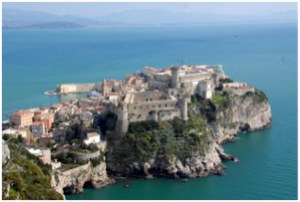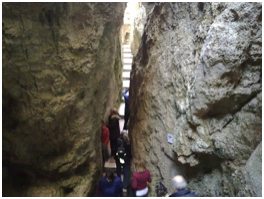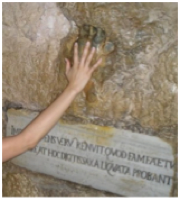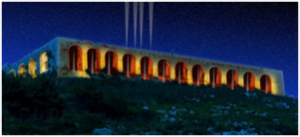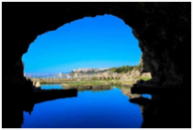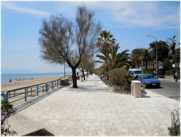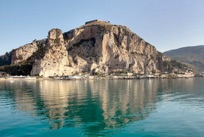On top of Gaeta’s promontory stands the Sanctuary of the SS. Trinity. At the left side of the church, one of the cracks leads to the Turk's Cave, enchanting tourist destination. This mountain, split into two parts, is a very impressive sight bringing pilgrims flocking by their thousands to venerate our Lord here.
“Montagna Spaccata” (Split Mountain) is widely believed to have split the moment Jesus died on the Cross on Calvary, thousands of miles off in the Holy Land.
According to the legend, at the time when the Saracens were overrunning Europe, a Turkish pirate, who did not believe that the rock had split at the death of Jesus, touched the rock and said, “If this is true, then let this rock become liquid.” As he spoke, the rock liquified and gave way to the imprint of his hand. You can put your fingers into the hand print today!


